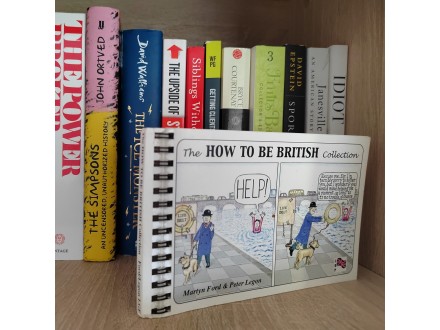The How to be British Collection
| Cena: |
| Želi ovaj predmet: | 3 |
| Stanje: | Polovan bez oštećenja |
| Garancija: | Ne |
| Isporuka: | Pošta CC paket (Pošta) Post Express Lično preuzimanje |
| Plaćanje: | Tekući račun (pre slanja) PostNet (pre slanja) Pouzećem Lično |
| Grad: |
Smederevska Palanka, Smederevska Palanka |
ISBN: Ostalo
Godina izdanja: 2222
Jezik: Engleski
Autor: Strani
A perennially popular collection of colour cartoon illustrations, with accompanying texts, on the endearing oddities of our British life and character. Drawing on their many years` experience of teaching English as a Foreign Language the authors also offer the wider world a tongue-in-cheek guide on how to get around in English and at the same time make sense of our `funny ways`. It`s a gentle brand of satire, and although there`s the occasional barbed arrow for bland food, fashion disasters or dubious standards of hygiene, the tone of The `How To Be British Collection` is more nostalgic than scornful, and the pet-loving, royal-watching, tea drinking characters that populate its pages are viewed with wry affection. Cartoons like `How to be Polite` and `How to Complain` have been reproduced in publications all over the world, perhaps because they put a finger on that peculiar tentativeness that foreigners find so puzzling (and so funny) about us. In order to be British, or at any rate to pass unnoticed in British society, the visitor must learn not to `make a fuss`. A fuss is something that the true Brit cannot stand. It is nearly as bad as a `scene`, and in the same category as `drawing attention to yourself`. In the first frame of How To Be Polite, a man -- presumably an uninitiated foreign visitor -- has fallen into a river. He`s clearly in trouble and is shouting HELP! -- at the top of his voice, judging by the speech bubble. An English gentleman is walking his dog along the river bank. There`s a lifebelt prominently displayed beside them, but the gent and his dog are walking away from the emergency with disapproving expressions. In the next frame, the man in the river has changed his strategy and is calling out: `Excuse me, Sir. I`m terribly sorry to bother you, but I wonder if you would mind helping me a moment, as long as it`s no trouble, of course...`. And this time, naturally, the English gent is rushing to his aid, throwing the lifebelt into the water. Even the dog is smiling. Much of the material in The `How to be British Collection` is about how cultural differences can prove a minefield for the unwary. To that extent its appeal - in an age where so many of us travel and even set up home overseas - is universal. Every visitor to Britain comes knowing that our favourite conversational gambit is the weather. But how many can successfully do it at 1) Elementary 2) Intermediate and 3) Advanced levels? The book`s enduring popularity comes from the recognition factor -- how exposed we can be once we stray away from the comfort zone of our own native language. A hapless visitor, phrase book in hand, stops to ask an old lady in the street for directions. He looks pleased with himself for phrasing the question so nicely, but then is utterly at a loss to understand her long, rambling, minutely detailed reply. We`ve all been there. To help the poor innocent abroad around these cultural and linguistic booby-traps, the book includes on most pages collectible Expressions to learn and (of course) Expressions to avoid. Thus, under the entry for Real English, which negotiates the difficult area of colloquial speech including `idioms, slang and even the occasional taboo word, as used by flesh and blood native speakers` we find -- Expressions to learn:"E nicked it off of a lorry and now the coppers `ave done `im for it.` Expressions to avoid: `That`s not correct English, Mrs. Jones -- it says so here in my grammar book`.
Predmet: 72037837











